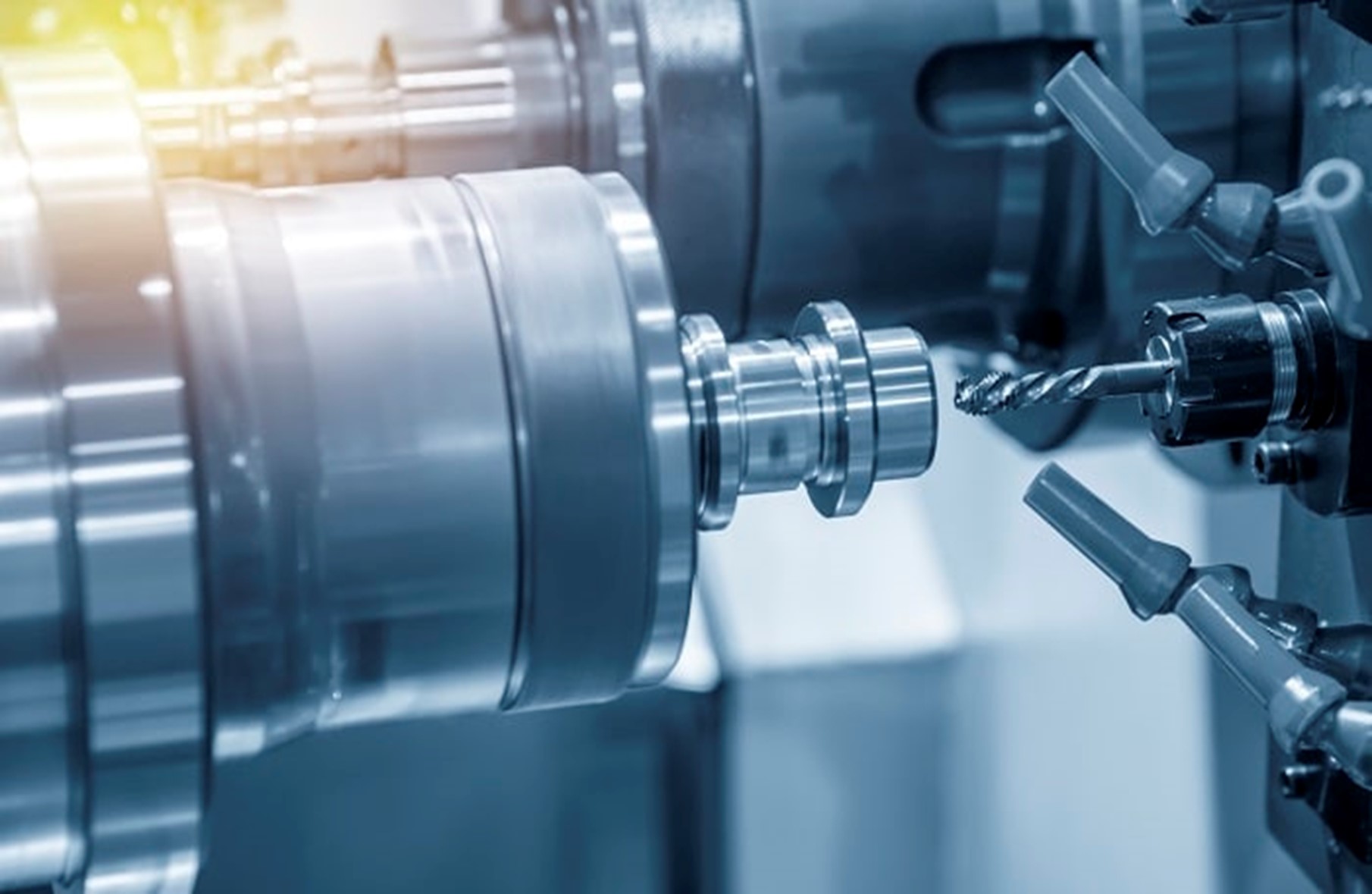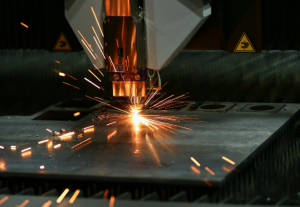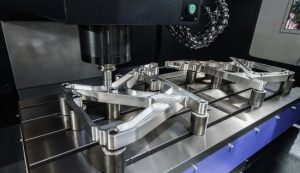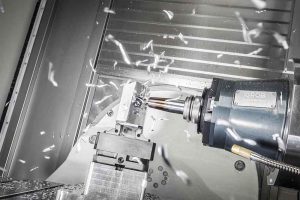To optimize CNC programs, select appropriate tools, adjust cutting parameters, streamline the program structure, leverage advanced technology, and rigorously test and validate the programs.
Choose the Right Tools
Tool Material and Coating
- The choice of tool material you use has a big deal to do with how many CNC machining operations that can be efficiently and quality executed. Carbide tools, steel alloys with higher than usual stick-in-ability and resistance to heating can machine difficult materials like stainless steels or aerospace high temp alloys. When high volumes of product are being produced or the materials used during production processes have abrasive components, carbide tooling can help improve performance and sometimes extend life up to 20% longer than that of standard High-speed steel (HSS) tools.
- Additionally, tool coatings are also crucial in improving the life and performance of a cutting system. For instance, titanium nitride (TiN) coating not only increases cutting-tool longevity by mitigating wear but also enables faster operation speeds that may have a direct impact on production times. When compared to other coatings, tools with TiN retain a sharper edge and maintain accuracy longer, which can reduce the number of times that tooling needs replacement.
Tool Geometry
- The Geometry of CNC tool, Shape angle size of cutting edges plays important role for machining efficiency. Some geometrical modifications can result in order of magnitudes improvements concerning removal and finish. The benefits are amplified for tools with higher helix angles, which cancel out the compressibility of soft materials like aluminum to keep chips from jamming in flutes and causing heat buildup that can lead to workpiece abrasion. This allowed for smoother finishes and increased the speed of operations resulting in achieved gains in time savings as well as material usage.
- For more delicate or fine milling, it is important to choose the correct tip-radius and flute-count tool. For instance, a fine tip is better for intricate patterns that need more detail whereas when cutting through materials like aluminum or soft plastics with long chips hold back on the flutes.
Custom Tooling Solutions
- Utilising Custom tooling can provide significant benefits, especially for very bespoke or difficult machining processes. Made-to-order tools are created for one specific task, their design typically optimized to work perfectly with the material ruggedness; on-demand. An aerospace parts manufacturer, for instance, may use a complex custom end mill built to remove titanium swiftly with up to 30% faster cycle times and high accuracy on key components.
- Furthermore, the machining process can be improved by combining custom tooling and advanced CNC programming techniques like adaptive clearing and rest machining. Adaptive clearing dynamically adjusts the toolpath according to material load on the tool in order to prevent excessive wear and tear, while rest machining is about removing left-over material from previous operations with more accuracy & efficiency.

Optimize Cutting Parameters
Adjusting Speed and Feed Rate
In this context, achieving higher cutting speeds and feed rates is the key to maximizing CNC machine efficiency. This is to say that increasing the spindle speed and feed rate proportionally can reduce cutting time by 20-30% without any negative effect on cut finish.. It is extremely important to find the perfect speed for your tool and material; harder materials usually need slower speeds, in order not to wear out your tools.
Depth of Cut
Another aspect that you will need to carefully consider is the depth of cut. An operation with a large depth of cut reduces the given amount of passes required and essentially saves time within machining. However, this needs to be tempered by what the machine can do and how long your tools will last. At the practical end of things, one may increase depth-of-cut by 10% in a well-defined manner to check its affects on tool life and finish quality.
Tool Path Optimization
Tool path optimization essentially means programming the machine to reach between cuts in the most efficient, shortest way possible. This will also decrease the non-cutting time, and worktable efficiency can go up to 15%. For example, taking advantage of techniques such as trochoidal milling – in which the tool moves side-to-side to its length (so that mot much material is machined at any one time; allowing high cutting speeds) enables constantly maintaining a specific constant for maximum feed rates.
Coolant and Lubrication
Containment of heat and friction by appropriate use of coolants and lubrication has the potential to significantly affect cutting variables extending tool life, improving cut quality. For example, even when it works with metals such as titanium and stainless steel up to 50%, the tool life can be increased by using an emulsified coolant instead of dry machining. Coolant selection should be compatible with the material and machining conditions for best performance.
Simplify Program Structure
Minimize Tool Changes
One direct way to increase operational efficiency in a CNC program is to reduce the number of tool changes. Each tool change (depending on the machine and setup) can range between several seconds to a few minutes, but when done repetitively over large production runs, it adds up greatly. Some others have reported reductions of 50%, by scheduling operational changes to keep the tool as consistent can be used across operations prior switch. This speeds up machining and decreases wear & tear of the machine bearings, increasing service life.
Optimize Tool Paths
Optimizing tool-path in order to minimize travel and non cutting time is another way how efficient programming looks like. Sophisticated software algorithms can determine optimal movement patterns, dramatically reducing non-cutting time. For instance, adopting the use of trochoidal paths during milling will decrease overall machining time by 15-20%, whilst reducing tool load and wear as well as potential breakage.
Integrate Subroutines
Employing subroutines to execute repetitive tasks within a CNC program can meaningfully clean up the coding structure. Subroutines, on the other hand enable us to program operations that need be repeated in an efficient way – as opposed to needing writing down each and every command for a repeat operationisc instead produce it once only. This feature not only makes the program more clear for reading and modification but can also reduce the code lines out by 30% at most, more or less which is very practical to long complicated structure parts with lots of offering details.
Use Conditional Statements
Conditional statements (IF, THEN, ELSE) in programming allows for automatically adjusting the manner of machining based on real-time conditions without manual intervention. This adaptive capability enables the machine to make decisions according a feature status, tool wear or other criterias. This kind of adaptive nature in programming will also result higher quality control throughout the manufacturing process and can even reduce material waste by up to 10% (in specific cases) through changes based on real world part conditions.
Use Advanced Technology
CAD/CAM Software Integration
Utilizing Computer-Aided Design (CAD) and Computer-Aided Manufacturing (CAM) software provides a higher level of accuracy to the practices involved in CNC programming, resulting in more efficient operations. These provide the ability to create more intricate and accurate tool paths in less time than it would take if manually programmed. Using CAM software such as Autodesk Fusion 360, or Mastercam can save a full 70% on time during the programming phase over more traditional methods. The simulation ability provided by these platforms helps the programmer to anticipate and correct any potential problems before implementing them in a real machining process, thus greatly reducing errors as well as saving of material wastage.
AI and Machine Learning
Integrating Artificial Intelligence (AI) and Machine Learning (ML) along the lines of CNC can provide great inroads towards predictive maintenance, process optimization etc. By processing data from machine operations, AI algorithms can predict tool wear and adjust machining parameters automatically to optimize the life of tooling as well as part quality. Industry implementations reports show that AI has the potential to increase overall equipment effectiveness (OEE) up by 10-20% through predicting failure modes and doing maintenance at the right time within production cycles.
Automation and Robotics
The Sort of Automation and Robotics Technology integrated into CNC machining delivers a faster production along with Safety, Stability and repeatability. Robotic arms can be used to shift parts either into or out of place, reducing the human labor and improving cycle times. Tool changers and palletizers automate further the handling, with gains up to 30% in production times recorded by companies which have already implemented such systems. Provides lights-out manufacturing integration, enabling the operation of machines for extended periods without human interference.
IoT for Connectivity
Using IoT devices in CNC machines leads to better monitoring and data collection. This allows for the connection to keep remote track of machine conditions, real-time adjustments of programs and resource management. CNC machines connected to a network can help in analyzing data on the go, providing insights that not just makes operations lean and efficient when it comes energy consumption (up to 15% as per certain studies), but also improves production planning and inventory management due better data-driven insights there.

Test and Validate Your Programs
Simulation Software Usage
Taking advantage of high-end simulation software is essential for proving out CNC programs before any chips are actually produced. VERICUT or SolidCAM are simulation tools that present a virtual platform on which; we can see the whole process of machining. These simulations work toward recognizing probable in-chip and machined glitches,outlining the possibilities of wreckage-occasioned tool-collisions, tool damage or part scrap. While bugs are largely unavoidable during the software development process, implementing simulation reduces programming errors by as much as 90%, which greatly cuts down time spent making trial-and-error adjustments in live runs.
Incremental Program Testing
Applying an iterative method of testing CNC programs provides accuracy and reduces risk. Run the program at slow speeds with no material to check if your tool paths are correct and machine movement is accurate. Start by increasing the speed and making some material cuts to see how the tool is performing with regard to cutting forces, chip flow angle and tools/material interaction. This sequential escalation allows for optimization, and can reduce setup time, initial test runs by up to 30%, when realizing high speed with highest possible quality is required from the beginning before running full production.
Feedback Loop Integration
A critical piece for allowing CNC programs to improve over time is creating a feedback loop between the shop floor and programming team. Operators should also give program performance feedback and insights on any areas for improvement. The collected real experience can be used to optimize programs, minimize unnecessary and improve the effectiveness of machining operations. Plants using structured feedback systems have seen their production efficiency levels increase by as much 15%, and, since the programs are tailored to machining conditions adjustments continue indefinitely.
Quality Assurance Protocols
Stringent quality assurance protocols consist of the use of precision measuring tools and software to ensure that all parts produced meet every single specified tolerance and level on a part print. Some customers use CMM and laser scanner to prove out the part dimension and tolerance, so that when a customer writes a CNC program, this is describing what they should be making within acceptable limits. This step is particularly important since accurately making parts can dramatically reduce rework and scrap rates – often increasing yield by up to 20% in precision-heavy industries such as aerospace or medical device manufacturing.







